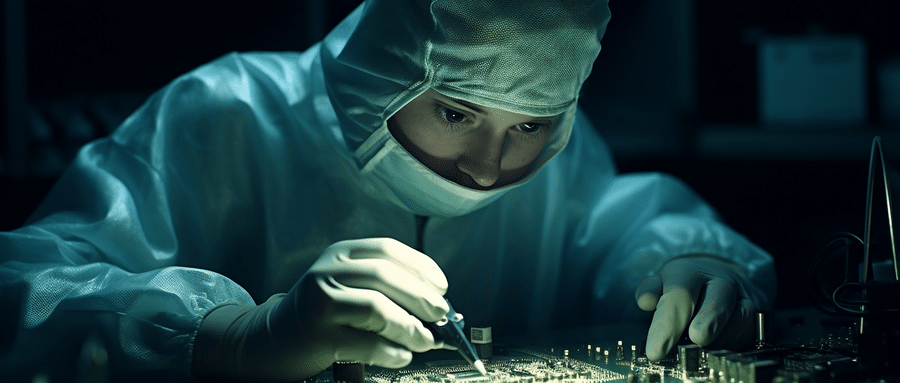Quick Turn PCB Assembly: Accelerating Prototyping and Production Cycles
Quick turn PCB assembly services have emerged as a crucial solution in the rapidly advancing electronics manufacturing world, providing rapid prototyping and production cycles of electronic products with shorter design iterations cycles, reduced time-to-market times and greater competitiveness. We will examine its benefits and impact in this article.
Benefits of Quick Turn PCB Assembly:
1. Rapid Time-to-Market:
Through fast turn PCB assembly, businesses are able to meet tight project deadlines and launch products more rapidly. Leveraging fast turn times enables designers to rapidly iterate designs, perform validation tests, and move from prototyping into full scale production; giving businesses a significant competitive edge by shortening time-to-market.
2. Iterative Optimization:
Quick turn PCB assembly services allow designers to rapidly iterate and optimize their designs quickly. They can obtain prototypes quickly, test their functionality fully, and implement any design modifications quickly – an iterative process which helps identify any design flaws or improvement opportunities early, leading to higher quality and more reliable end products.
3. Risk Reduction:
Businesses using quick turn PCB assembly can use it to minimize risks associated with long lead times and production delays. Quick production turnaround times help companies make timely adjustments and lessen disruptions to their supply chains and production schedules, thus mitigating risks associated with long lead times and production delays.
4. Flexibility in Manufacturing:
Quick turn PCB assembly services offer flexible manufacturing capabilities. Businesses can request small to medium production runs without being forced into large volume commitments, which enables cost-effective production as well as efficient inventory management; decreasing unnecessary stockpiling of parts while cutting associated costs.
Considerations for Quick Turn PCB Assembly:
1. Design for Manufacturability (DFM):
To maximize efficiency in quick turn PCB assembly, it is vital to design PCBs using manufacturability principles in mind. This requires following DFM guidelines such as proper component placement and spacing as well as using standard package sizes and footprints for your component packages. Adherence to DFM principles helps facilitate more efficient production processes with faster assembly times.
2. Supplier Collaboration:
A strong supplier collaboration is essential to successful PCB assembly. Engaging early with an assembly service provider allows for better communication, clarifications and production optimization; further strengthening overall success of quick turn assembly process.
3. Quality Control:
While speed is essential, quality is just as essential. For this reason, it is vital that quick turn PCB assembly service providers incorporate rigorous quality control processes throughout their assembly processes – including inspection, testing and adhering to industry standards – for product reliability and performance assurance.
4. Compatibility and Lead Times:
Before engaging a quick turn PCB assembly service provider, designers should verify compatibility between their design files and requirements with what the service can provide as well as lead times that align with project timelines and expectations. Having clear communication on pricing structures, turnaround times and assembly processes is essential.

Quick turn PCB assembly services have revolutionized product development and manufacturing cycles for electronics businesses. Their ability to quickly iterate designs, reduce time-to-market, and mitigate production delays allows companies to remain competitive in an ever-evolving electronics market. By considering all the benefits discussed herein, designers and businesses alike can utilize quick turn PCB assembly services as a powerful way of driving innovation, speeding production cycles, and getting high quality products out faster than ever before.
FAQ:
- What is Quick Turn Printed Circuit Board Assembly?
Quick-turn PCB assembly refers to a special service offered by PCB manufacturers where the assembly of the PCB is expedited. This allows customers to receive their assembled PCBs in a shorter timeframe, ranging from a few hours to several days. - Why might I need Quick Turn Printed Circuit Board Assembly?
If you have a tight project deadline, need to test a prototype quickly, or want to launch a product to market ahead of competitors, quick-turn Printed Circuit Board assembly can be a good option. - Does Quick Turn Printed Circuit Board Assembly compromise on Quality?
Despite the shorter timeframe, quality should not be compromised in a quick turn service. Manufacturers should follow the same quality assurance procedures to ensure the final product meets or exceeds expectations. - Can Quick Turn Printed Circuit Board Assembly handle both Prototypes and Production Quantities?
Yes, quick turn PCB assembly is suitable for both prototype quantities and low to medium volume production. However, it’s always good to confirm with the manufacturer based on your requirements. - Does Quick Turn PCB Assembly cost more?
Yes, typically quick turn assembly services cost more due to the added logistics and manufacturing adjustments required to expedite the process. - What info do I need to provide for Quick Turn PCB Assembly?
You would typically need to provide PCB design files, Bill of Materials (BOM), component placement files, and assembly instructions. - How much faster is Quick Turn PCB assembly compared to regular assembly?
The exact timeframe can vary based on specific project requirements and manufacturer capabilities. However, quick turn assembly can often reduce the lead time from several weeks down to a few days or hours. - How efficient is Quick Turn PCB Assembly?
Quick turn PCB assembly is relatively efficient and can allow you to validate your design, carry out functional tests, or launch a product much faster. - Are all components suitable for Quick Turn PCB Assembly?
While most standard components are suitable, availability can be a factor. If your design includes rare, custom-made, or hard-to-source components, ensure you inform the manufacturer at the earliest to prevent delays. - Can Quick Turn PCB assembly handle complex PCBs?
The ability to handle complex PCBs in a quick-turn setting depends on the manufacturer’s capabilities in terms of technology, equipment, and expertise. Most manufacturers can accommodate complexity, but it’s always best to confirm.























